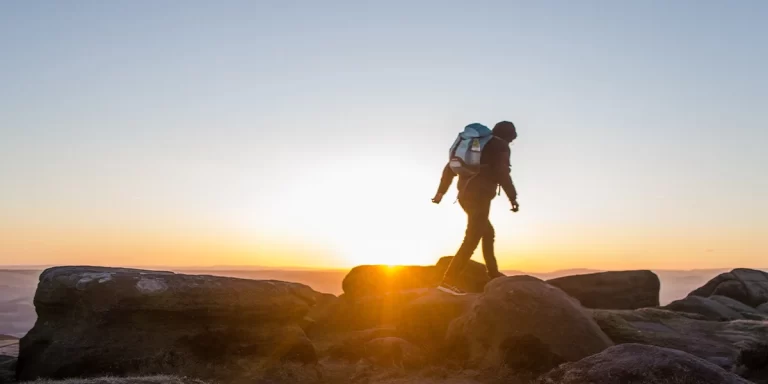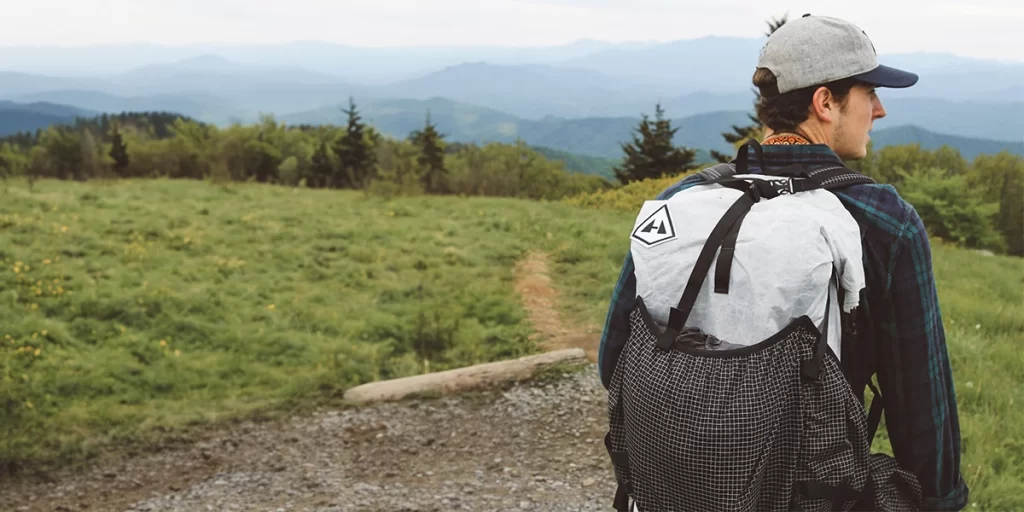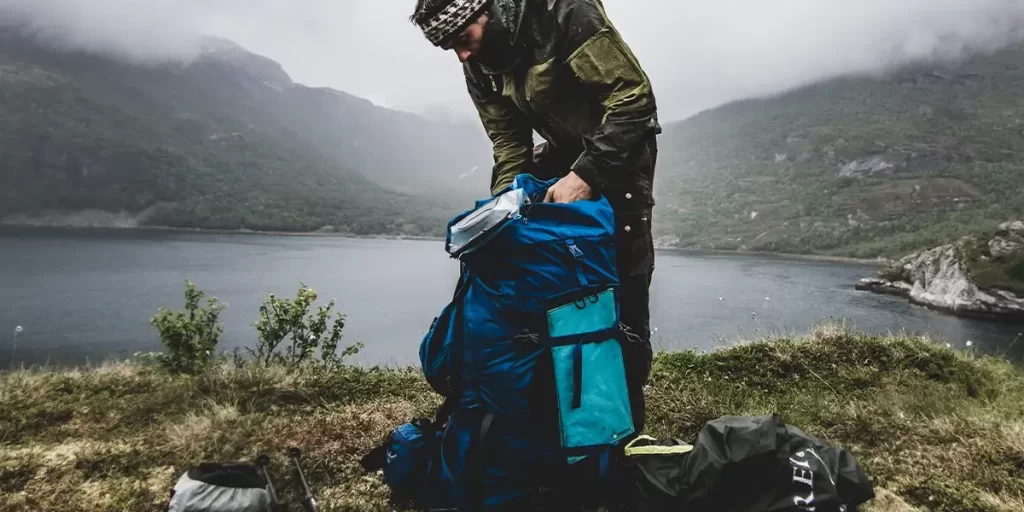

You might have heard about two types of packs: frameless and framed backpacks. But what’s the big deal, and how do you know which one is for you?
In this post, we’re going to settle the age-old frameless vs framed backpacks debate and help you figure out which option is the best fit for your next outdoor adventure.

Frameless backpacks, as the name suggests, don’t have a frame. The shape of the pack depends on the gear you place inside, offering unique advantages, especially for hikers and backpackers looking to minimize weight and stay nimble on the trails.
Frameless Backpacks – Pros:
But, it’s not all smooth sailing; it’s crucial to think about their downsides too:
Frameless Backpacks – Cons:
Remember, frameless packs are best suited for ultralight backpacking scenarios. They may not be the ideal choice if you plan to carry a lot of gear or tackle rugged terrain.
Popular ultralight frameless backpack options include:
| Make / Model | Weight oz (g) | Size (l) |
|---|---|---|
| Zpacks Nero Ultra 38L Backpack | 10.51 (298g) | 38 |
| Hyperlite Mountain Gear Southwest 40 | 30.4 (862) | 40 |
| Zpacks Arc Haul Ultra 50L | 20.77 (589) | 50 |
| Granite Gear Virga3 55 | 27.97 (793) | 55 |

Framed backpacks, as the name suggests, incorporate frames made from various materials. For instance, brands like Jack Wolfskin use metal, while eco-conscious brands like Fjällräven opt for wood.
These packs come with their own set of advantages that cater to different backpacking scenarios:
Framed Backpacks – Pros:
However, it’s crucial to be aware of their potential drawbacks as well:
Framed Backpacks – Cons:
Popular framed backpack options include:
| Make / Model | Weight oz (g) | Size (l) |
|---|---|---|
| Durston Kakwa 40 | 27.33 (775) | 40 |
| REI Co-op Traverse 32 Pack | 40.98 (1162) | 31-33 |
| Six Moon Designs Swift V Rucksack | 32.09 (910) | 50 |
| Exped Lightning 45 | (1180) | 45 |
Let’s start with a comparsion table between these two options to quickly what we’ve just covered in the previous sections
| Feature | Frameless | Framed |
|---|---|---|
| Weight | Ultralight, usually around 17-30 oz | Depends on the sturdiness of the frame, anywhere from 20oz to 6.6 lb |
| Load capacity | Up to 20 lbs comfortably | 25-40+ lbs comfortably |
| Capacity (size) | Smaller capacities, usually <50L | Larger capacities, often 50L+ |
| Price | Depends on the product; similar | Depends on the product; similar |
| Flexibility | Conforms to body, forgiving fit | More rigid structure; better durability |
| Ventilation | Less breathable and can lead to an uncomfortably hot and sweaty back | These packs have ventilation channels that allow air to circulate between the pack and the wearer’s back |
| Packability | Difficult to pack efficiently; might require the use of compression straps | Maintains shape for organization |
| Use Case | Day hikes, ultralight backpacking | Longer backpacking or trekking trips |
| Waterproof Options | Available | Available |
So, which option should you choose?
You should choose a frameless backpack if…
You should choose a framed backpack if…
For ultralight backpackers seeking to cut weight and move swiftly, frameless packs offer simplicity, flexibility, and potential carry-on compatibility, especially suited for lighter loads and straightforward hikes.
In contrast, framed backpacks provide superior support and larger capacities, making them ideal for comfortable extended journeys, though they tend to be bulkier and heavier due to their maintained shape for efficient packing.
As enthusiastic advocates of ultralight backpacking, we always opt for the frameless option, given the excellent choices available in the market.
Whatever you choose, embrace your new backpack’s capabilities, setting the stage for a memorable hiking or backpacking adventure.
Interested in a frameless ultralight backpack? Check out our TOP 5 guides that cover the lightest backpacks on the planet.
Frameless backpacks can be a good choice if you want a lightweight and versatile backpacking experience. They are simple and flexible, making them great for ultralight hikers and those who like to keep things simple. However, if you prefer more support and carrying larger loads, framed backpacks might be a better option for you. So, whether frameless backpacks are worth it depends on your hiking style and needs.
You should consider switching to a framed backpack when your gear weight exceeds around 20-25 pounds (9-11 kilograms). Framed backpacks offer better support and weight distribution for heavier loads, enhancing your hiking or backpacking comfort and experience.
Lack of a frame negatively affects the comfort of a backpack in several key ways. Frames help distribute weight across the hips and back while improving ventilation, stability, and loading efficiency. Without a frame, the pack’s weight is concentrated in the shoulders, leading to strain. The pack also sags, lacks airflow, feels top-heavy, and is harder to load. Ultralight backpackers accept these sacrifices for increased agility, but most prefer framed packs for optimal comfort, support, and carrying capacity. A good hip belt helps partially offset the missing frame.